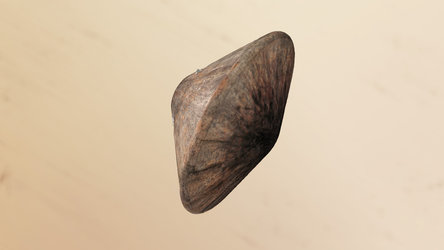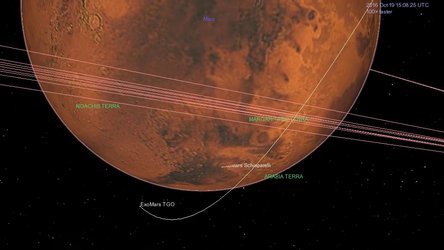Accept all cookies Accept only essential cookies See our Cookie Notice

About ESA
The European Space Agency (ESA) is Europe’s gateway to space. Its mission is to shape the development of Europe’s space capability and ensure that investment in space continues to deliver benefits to the citizens of Europe and the world.
Highlights
ESA - United space in Europe
This is ESA ESA facts Member States & Cooperating States Funding Director General Top management For Member State Delegations European vision European Space Policy ESA & EU Space Councils Responsibility & Sustainability Annual Report Calendar of meetings Corporate newsEstablishments & sites
ESA Headquarters ESA ESTEC ESA ESOC ESA ESRIN ESA EAC ESA ESAC Europe's Spaceport ESA ESEC ESA ECSAT Brussels Office Washington OfficeWorking with ESA
Business with ESA ESA Commercialisation Gateway Law at ESA Careers Cyber resilience at ESA IT at ESA Newsroom Partnerships Merchandising Licence Education Open Space Innovation Platform Integrity and Reporting Administrative Tribunal Health and SafetyMore about ESA
History ESA Historical Archives Exhibitions Publications Art & Culture ESA Merchandise Kids Diversity ESA Brand Centre ESA ChampionsLatest
Space in Member States
Find out more about space activities in our 23 Member States, and understand how ESA works together with their national agencies, institutions and organisations.
Science & Exploration
Exploring our Solar System and unlocking the secrets of the Universe
Go to topicAstronauts
Missions
Juice Euclid Webb Solar Orbiter BepiColombo Gaia ExoMars Cheops Exoplanet missions More missionsActivities
International Space Station Orion service module Gateway Concordia Caves & Pangaea BenefitsLatest
Space Safety
Protecting life and infrastructure on Earth and in orbit
Go to topicAsteroids
Asteroids and Planetary Defence Asteroid danger explained Flyeye telescope: asteroid detection Hera mission: asteroid deflection Near-Earth Object Coordination CentreSpace junk
About space debris Space debris by the numbers Space Environment Report In space refuelling, refurbishing and removingSafety from space
Clean Space ecodesign Zero Debris Technologies Space for Earth Supporting Sustainable DevelopmentLatest
Applications
Using space to benefit citizens and meet future challenges on Earth
Go to topicObserving the Earth
Observing the Earth Future EO Copernicus Meteorology Space for our climate Satellite missionsCommercialisation
ESA Commercialisation Gateway Open Space Innovation Platform Business Incubation ESA Space SolutionsLatest
Enabling & Support
Making space accessible and developing the technologies for the future
Go to topicBuilding missions
Space Engineering and Technology Test centre Laboratories Concurrent Design Facility Preparing for the future Shaping the Future Discovery and Preparation Advanced Concepts TeamSpace transportation
Space Transportation Ariane Vega Space Rider Future space transportation Boost! Europe's Spaceport Launches from Europe's Spaceport from 2012Latest
Mars arrival orbits
Thank you for liking
You have already liked this page, you can only like it once!
The orbital paths of ESA’s ExoMars Trace Gas Orbiter (TGO), the Schiaparelli entry, descent and landing demonstrator, and Mars Express on 19 October 2016, when TGO and Schiaparelli arrive at Mars.
At the start of the animation, TGO and Schiaparelli are shown already separated, which is set to occur at 14:42 GMT (16:42 CEST) on 16 October.
The animation covers the time between about 12:30 GMT (14:30 CEST) and 19:00 GMT (21:00 CEST) on 19 October, including the expected time of Schiaparelli touch down at 14:47 GMT (16:47 CEST) and the critical, 139 min TGO orbit insertion engine burn, ending at 15:34 GMT (17:34 CEST).
At the end of the animation, TGO has been captured into Mars orbit and is seen starting its first circuit, expected to be highly elliptical, varying from about 300 km to 96 000 km above the planet and taking four martian days (each day equal to 24 h 39 min) to complete one revolution.
Mars Express is seen in its current polar orbit, from which it will have good visibility of Schiaparelli's descent and landing starting with atmosphere entry at 14:53 GMT (16:43 CEST). Mars Express will record signals from Schiaparelli during arrival, providing a critical record of the module’s descent progress, trajectory and landing.
-
CREDIT
ESA -
LICENCE
ESA Standard Licence
-
Animation
-
-
-
-

Schiaparelli’s heat-scorched shield

ExoMars arrival seen by Mars Express

ExoMars 2016 separation of Schiaparelli

ExoMars 2016 cruise to Mars















 Germany
Germany
 Austria
Austria
 Belgium
Belgium
 Denmark
Denmark
 Spain
Spain
 Estonia
Estonia
 Finland
Finland
 France
France
 Greece
Greece
 Hungary
Hungary
 Ireland
Ireland
 Italy
Italy
 Luxembourg
Luxembourg
 Norway
Norway
 The Netherlands
The Netherlands
 Poland
Poland
 Portugal
Portugal
 Czechia
Czechia
 Romania
Romania
 United Kingdom
United Kingdom
 Slovenia
Slovenia
 Sweden
Sweden
 Switzerland
Switzerland


























